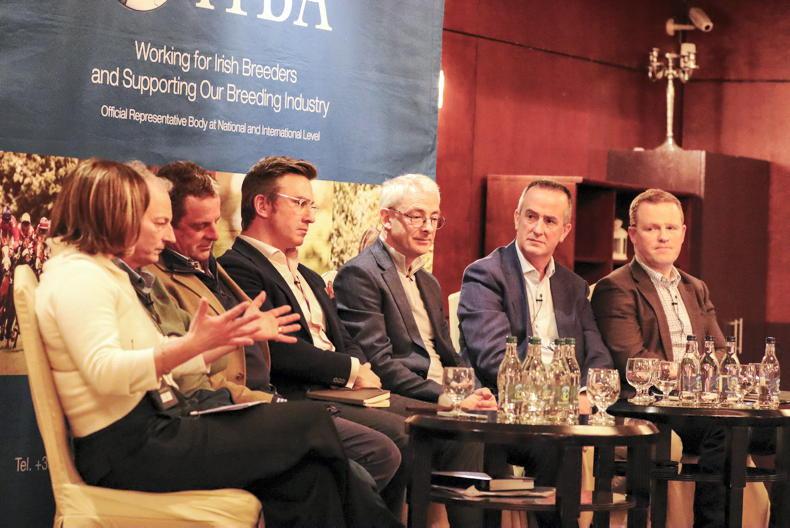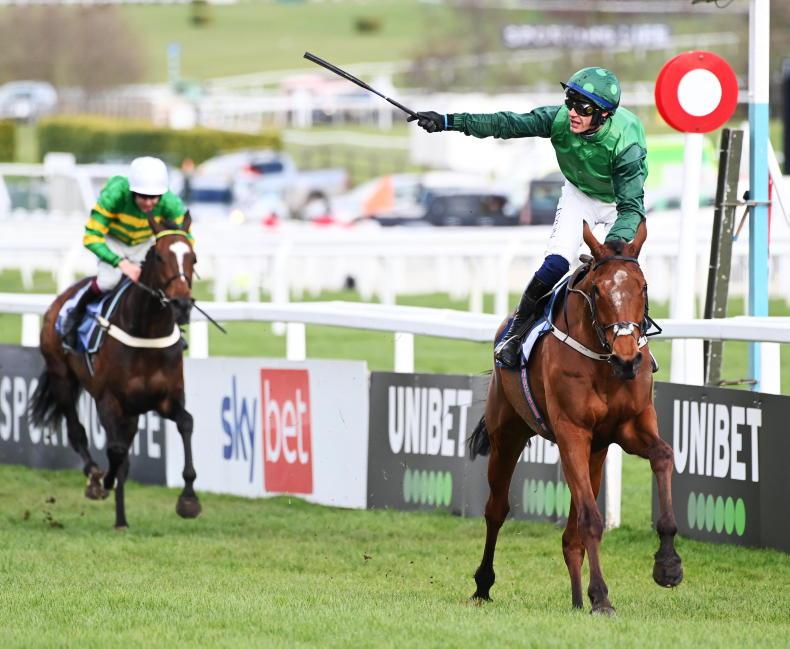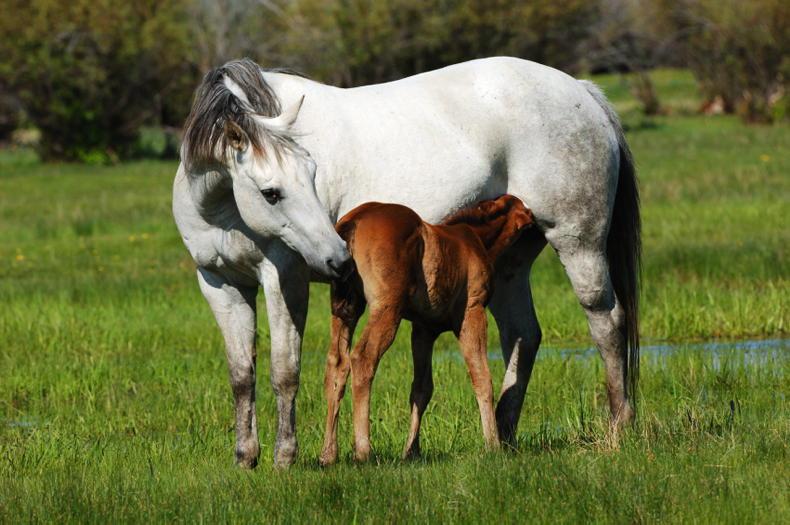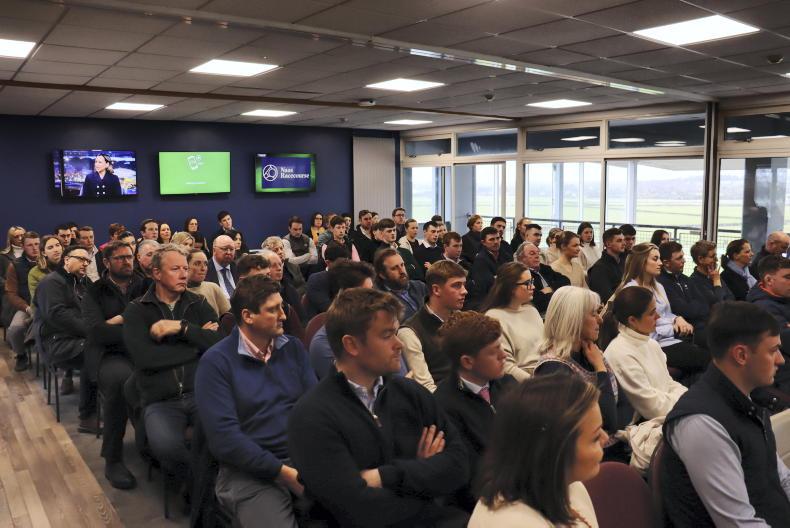IRISH National Hunt horses need to start racing earlier in their careers.
That was the consensus of a seven-strong panel at this week’s Irish Thoroughbred Breeders’ Association (ITBA) NH Seminar, entitled ‘Jumping Into The Future’, which attracted a full house at The Lord Bagenal in Leighlinbridge, Co Carlow.
Panellists Walter Connors, Peter Molony, Bertrand le Metayer, Anthony Bromley, Charles O’Neill and Richard Pugh answered questions from MC Lorna Fowler and the audience. A hot topic was the growing influence of French-bred jumps stock.
“You don’t learn to box when you’re 25, your face is going to be black and blue,” said Metayer, a bloodstock and racing advisor in France. “This is a sport of combat, it’s testing for distance and for stamina, for the ground and for the jumps, you cannot do this sport by starting late.”
Bromley, a key part of the Highflyer Bloodstock team, added: “The French system has involved racing horses aged three and four over jumps at Auteuil for over 150 years. They have been using that to breed and their broodmare band is producing. They are jumping fences at three in soft ground. They are precocious jumpers and have been breeding that for generations.
“The best blacktype Irish families are too backward for what the whole industry requires now. Training has gotten so expensive. You can’t keep a horse in training for four and five years waiting. It’s the way of society, things have got to happen a bit quicker these days.”
Rathmore Stud’s Peter Molony started the discussion on a positive note, suggesting that it wasn’t “all doom and gloom”, citing the good results for Irish-bred horses over Christmas, but he did feel that the store horses were too fat, in comparison with French-bred horses.
“One year behind”
Richard Pugh of Tattersalls and Point-to-Point Services made the situation clear through the use of statistics.
“We’re almost exactly one year behind,” he said “The number of French-bred horses that run at the end of their three-year-old year is 60%, the number of Irish-bred horses that run at the end of their four-year-old year is 53%. That is basically on par, so we are just running one year behind.
“It makes complete sense because when Envoi Allen won the first four-year-old maiden of the four-year-old season at Ballinaboola, it was the first time he was allowed to jump a jump in Ireland. It was impossible for him to do it before then. Fastorslow had won a three-year-old chase by that stage.
“I don’t see any negative in starting earlier. If you own the animal, you have one less year’s keep to pay for. If I am the end-user buying him off you, you’re prepared to take 5,000 less, because you don’t have that keep pay.
“The chance of them getting heavier in the meantime is less, the chance of the person with the mare finding out if the mare is good, bad or indifferent, is quicker, and will have less cost so you can make a more informed decision quicker and the same goes for deciding on stallions. The information comes quicker.”
The panel largely recognised the need for a three-year-old programme, which Pugh said is a simple solution but would require a bumpy journey.
“It’s a chicken and egg situation,” he explained. “We [Tattersalls] and Goffs could put on a two-year-old sale, but with the absence of a three-year-old programme, we’d be at nothing. If we as an industry put on a three-year-old programme, in the absence of supply, that would fall over a cliff as well.
“At the moment we are feeding the three-year-olds into a four-year-old system. Is there enough cash flow to fund a two-year-old to three-year-old system as well? It has to fit the model. You’ve got to find a time of year when they have a window and that’s where those sales would go.
“It isn’t simple to get it right - when do you put on the races, when do you put on the sales, who’s going to buy them?”




 This is a subscriber-only article
This is a subscriber-only article
 It looks like you're browsing in private mode
It looks like you're browsing in private mode










SHARING OPTIONS: